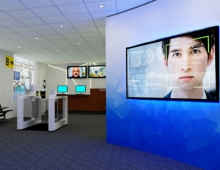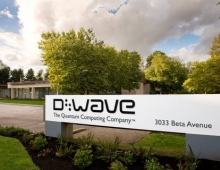NEC ND-4571A
8. CD Writing Quality - Clover Systems
Review Pages
2. CD - DVD Reading
3. CD Error Correction Tests
4. DVD Error Correction
5. Audio - Data Protection Tests
6. CD Burning Tests
7. CD Writing Quality - PlexTools
8. CD Writing Quality - Clover Systems
9. DVD Writing Times
10. 16x DVD+R Writing Quality Tests
11. 8x DVD+R Writing Quality Tests
12. 16x DVD-R Writing Quality Tests
13. 8x DVD-R Writing Quality Tests
14. DVDRW Writing Quality Tests
15. DVD Writing Quality Tests - Almedio
16. DVDR DL Tests
17. SA300 Correlation Tests - Page 1
18. SA300 Correlation Tests - Page 2
19. SA300 Correlation Tests - Page 3
20. SA300 Correlation Tests - Page 4
21. BitSetting Tests
22. Final Thoughts
CIRC error correction uses two principles to detect and correct errors. The first is redundancy (extra information is added, which gives an extra chance to read the disc), and the second is interleaving (data is distributed over a relatively large physical area). The CIRC error correction used in CD players uses two stages of error correction, the well known C1 and C2, with de-interleaving of the data between the stages.
The error type E11 means one bad symbol was corrected in the C1 stage. E21means two bad symbols were corrected in the C1 stage. E31 means that there were three or more bad symbols at the C1 stage. This block is uncorrectable at the C1 stage, and is passed to the C2 stage. Respectively, E12 means one bad symbol was corrected in the C2 stage and E22 means two bad symbols were corrected in the C2 stage. E32 means that there were three or more bad symbols in one block at the C2 stage, and therefore this error is not correctable.
BLER (Block Error Rate) is defined as the number of data blocks per second that contain detectable errors, at the input of the C1 decoder. Since this is the most general measurement of the quality of a disc, you will find BLER graphs for all media tested below. If you click on the images you can see a more detailed table, indicating error levels. The Red Book specification (IEC 908) calls for a maximum BLER of 220 per second averaged over ten seconds. Discs with higher BLER are likely to produce uncorrectable errors. Al low BLER shows that the system as a whole is performing well, and the pit geometry is good. However, BLER only tells us how many errors were generated per second, and it does not tell us anything about the severity of those errors.
- BenQ 80min 52X @ 48X
- Memorex 80min 52X @ 48X
- Ridisc 80min 52X @ 48X
- TY 80min 52X @ 48X
- Summary

According to the above tables and the overall result table, the only media that managed to achieve the pass grade was the TY media. Note here that the CDX is set to a level of quality that only allows the best of the burned media to achieve a "Pass" grade, so this can be described as an extreme outcome. In reality all media will be readable to some level, while the TY will be the only perfect media to be read by eny device and will last longer.
Review Pages
2. CD - DVD Reading
3. CD Error Correction Tests
4. DVD Error Correction
5. Audio - Data Protection Tests
6. CD Burning Tests
7. CD Writing Quality - PlexTools
8. CD Writing Quality - Clover Systems
9. DVD Writing Times
10. 16x DVD+R Writing Quality Tests
11. 8x DVD+R Writing Quality Tests
12. 16x DVD-R Writing Quality Tests
13. 8x DVD-R Writing Quality Tests
14. DVDRW Writing Quality Tests
15. DVD Writing Quality Tests - Almedio
16. DVDR DL Tests
17. SA300 Correlation Tests - Page 1
18. SA300 Correlation Tests - Page 2
19. SA300 Correlation Tests - Page 3
20. SA300 Correlation Tests - Page 4
21. BitSetting Tests
22. Final Thoughts

























